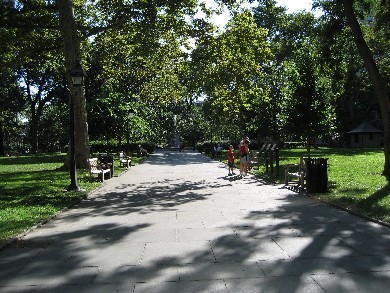1700-1820: Potter's Fields
Potter's Field: New Testament, Matthew 27:7 "So they decided to use the money to buy the potter's field as a burial place for foreigners." A quote that relates to a decision made by the Priests for use of money returned by repentant Judas. In those days, the potter's field was land not fit for agriculture but only for clay for the potter. The term potter's field henceforth has implied a burial site for the "unknown."
For those who could not afford a vault or a grave or those who were not associated with a congregation with a burial site, Potter's Fields represented the final resting place. Early Potter's Fields were not separate cemeteries but initially were burial areas incorporated into a vacant portion of an existing church graveyard or a designated community burial ground for paupers, foreigners, slaves, prisoners, and the unidentified. It is often difficult to trace Potter's Fields since they were usually unmarked and were often used for short periods of time.
One of the more infamous Potter's Fields was the "Stranger's Burial Ground" and "Negroes Ground," located in Southeast Square (now Washington Square), Philadelphia, near Independence Hall. Dead inmates from the Walnut Street Prison across the street, yellow fever victims, Revolutionary War soldiers in mass burials, and free and enslaved African Americans all found unmarked resting places in this public square until the first quarter of the 19th century. Today the square is used as a public park. It features interpretive panels telling its history and a Tomb for the Unknown Soldier of the American Revolution.
As post-Revolutionary cities grew, municipalities had to create public cemeteries for the poor farther from the center of urban life. Wherever they were located, such public cemeteries were euphemistically termed Potter's Fields.
Monuments were never expected. If memorials were established, they were temporary at best.
 |
| Washington Square, Philadelphia |